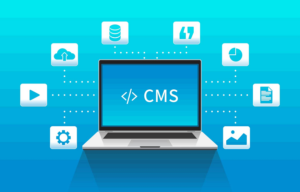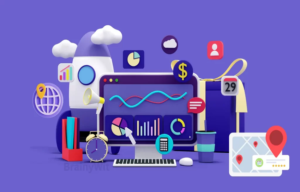The Impact Of Iot On Construction Material Management: What You Need To Know

The construction industry is notorious for its inefficiencies in material management, leading to wasted resources, delays, and higher costs. However, the Internet of Things (IoT) has emerged as a game-changing technology that can revolutionize the way materials are managed in construction projects. The introduction of material management software for construction is enabling construction businesses to optimize their procedures and better manage their things. In this article, we’ll explore the impact of IoT on construction material management and what you need to know to take advantage of this emerging technology.
What is IoT and how does it work in construction material management?
The Internet of Things (IoT) refers to a network of physical devices, vehicles, and other objects embedded with sensors, software, and connectivity to enable them to collect and exchange data. In the context of construction material management software, IoT devices can be used to track and monitor the location, condition, and usage of materials in real-time. By leveraging IoT technology, construction companies can gain greater visibility and control over their material inventory, which can lead to significant cost savings and productivity gains.
IoT devices work by collecting data from sensors attached to physical objects and transmitting that data to a central database or cloud platform. In construction material management software, IoT devices can be embedded in materials, tools, and equipment to track their location, condition, and usage. For example, sensors can be attached to pallets of bricks or bundles of steel to track their movement through a construction site. Similarly, tools and equipment can be equipped with sensors to track usage patterns and identify when maintenance is required.
Benefits of IoT in construction material management
The benefits of IoT in construction material management are numerous and significant. Here are some of the key benefits that construction companies can expect to see when they adopt IoT technology:
- Real-time inventory tracking: IoT devices enable real-time tracking of materials and inventory levels, which can help construction companies optimize their material usage and avoid delays caused by material shortages.
- Improved safety: IoT devices can be used to monitor the condition of equipment and tools, identify potential hazards, and alert workers to unsafe conditions. This can help reduce accidents and injuries on construction sites.
- Enhanced productivity: IoT devices can help construction companies identify inefficiencies in their material management processes and optimize their workflows to improve productivity and reduce waste.
- Reduced costs: By providing real-time visibility into material inventory levels, IoT devices can help construction companies avoid over-ordering materials, which can lead to significant cost savings.
- Better decision-making: IoT devices provide construction companies with valuable data that can be used to make informed decisions about material usage, equipment maintenance, and resource allocation.
Use cases of IoT in construction material management
IoT technology can be applied in many different ways in construction material management. Here are some examples of how construction companies are using IoT devices to improve their material management processes:
- Real-time inventory tracking: IoT devices can be used to track the movement of materials through a construction site, enabling real-time inventory tracking and automatic reordering when inventory levels fall below a certain threshold.
- Tool and equipment monitoring: IoT devices can be used to monitor the usage patterns and condition of tools and equipment, enabling predictive maintenance and reducing downtime caused by equipment failures.
- Environmental monitoring: IoT devices can be used to monitor environmental conditions on construction sites, such as temperature, humidity, and air quality. This can help ensure that materials are stored in the optimal conditions and that workers are not exposed to hazardous conditions.
- Asset tracking: IoT devices can be used to track the location and condition of high-value assets, such as heavy machinery and vehicles, to prevent theft and ensure that they are being used efficiently.
- Quality control: IoT devices can be used to monitor the quality of materials as they are being transported and stored, enabling early detection of defects and reducing the risk of material waste
- Supply chain management: IoT devices can be used to monitor the movement of materials and equipment throughout the supply chain, from suppliers to construction sites. This can help construction companies optimize their supply chain processes and reduce costs.
- Waste management: IoT devices can be used to monitor the amount of waste generated on construction sites, enabling construction companies to identify opportunities to reduce waste and improve their sustainability practices.
Challenges in adopting IoT for construction material management
While the benefits of IoT in construction material management are clear, there are also some challenges that construction companies may face when adopting this technology. Here are some of the key challenges to keep in mind:
- Cost: The cost of IoT devices and the infrastructure required to support them can be a barrier for some construction companies, particularly smaller firms with limited budgets.
- Data management: IoT devices generate a large amount of data, which can be difficult to manage and analyze. Construction companies will need to invest in data analytics tools and expertise to make the most of this data.
- Security: IoT devices can be vulnerable to cyber-attacks, which can compromise sensitive data and cause disruptions to construction projects. Construction companies will need to implement robust cybersecurity measures to protect their IoT systems.
- Workforce training: IoT devices and the data they generate may be unfamiliar to some construction workers, who will need to be trained on how to use and interpret this data.
Best practices for implementing IoT in construction material management
To ensure a successful implementation of IoT in construction material management, construction companies should follow these best practices:
- Start small: Begin by piloting IoT technology on a small scale, such as on a single construction site or with a limited set of materials or equipment.
- Identify clear goals: Define clear goals for the implementation of IoT technology, such as improving material inventory management or reducing equipment downtime.
- Choose the right technology: Select IoT devices and infrastructure that are appropriate for the specific needs of the construction company and its projects.
- Invest in data analytics: Invest in data analytics tools and expertise to help make sense of the data generated by IoT devices.
- Train the workforce: Train workers on how to use and interpret data generated by IoT devices, and on how to use IoT-enabled tools and equipment.
- Focus on security: Implement robust cybersecurity measures to protect IoT systems and data from cyber-attacks.
Conclusion
The Internet of Things (IoT) is poised to transform the way materials are managed in construction projects. By providing real-time tracking and monitoring of materials and equipment, IoT devices can help construction companies improve productivity, reduce costs, and enhance safety. However, implementing IoT technology in construction material management using construction material management software comes with its own set of challenges, including cost, data management, security, and workforce training. By following best practices and working with experienced IoT providers, construction companies can overcome these challenges and realize the full benefits of IoT in their material management processes. Material management software for construction is gaining more popularity across the world, which is resulting in the introduction of various construction software providers like Foundation Software. So, to get the optimized construction material management software, contact now!







